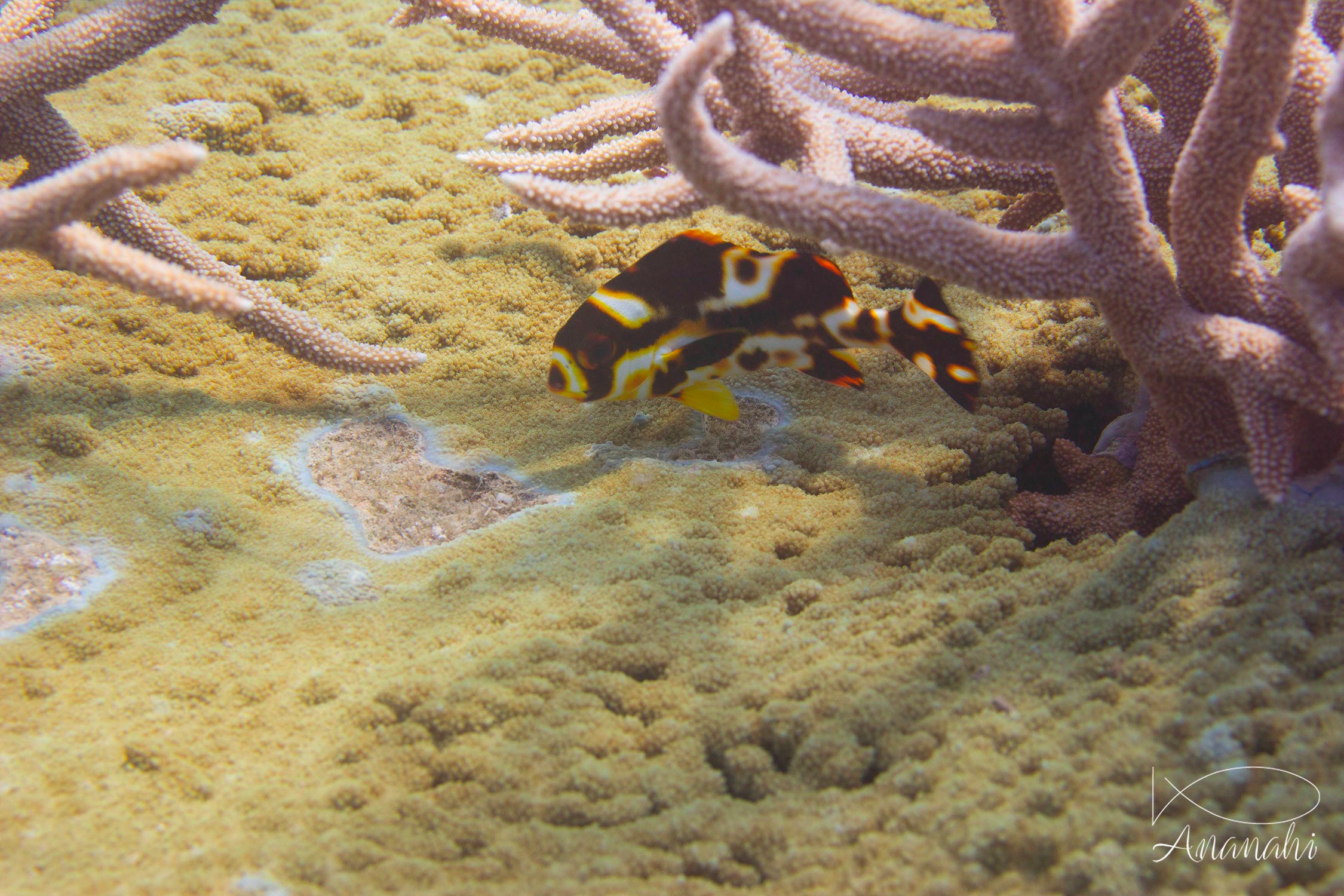
Scientific name: Plectorhinchus vittatus
Size: Up to 5.9 inches
Color: Brown, yellow, cream
Distinguishing feature: Brown body dotted with white spots, themselves surrounded by orange-yellow
Where did we see it: French polynesia, Mexico, Mayotte, Maldives, Raja Ampat

Scientific name: Plectorhinchus vittatus
Size: Up to 5.9 inches
Color: Brown, yellow, cream
Distinguishing feature: Brown body dotted with white spots, themselves surrounded by orange-yellow
Where did we see it: French polynesia, Mexico, Mayotte, Maldives, Raja Ampat
For Oriental diagram, the fur of juveniles is very different from adults. It looks like a livery of nudibranchs or flat-worm, which deliver toxic substances. This could have a preventive purpose against predators.
This juvenile prefers sheltered areas, he also likes to hide in the hollows of corals or branched corals.
He is quite shy as a child, but will always stay near his hiding place and not go far away.
Mammals have a horizontal tail.
Fishes have a vertical fin.
We can hear the bull shark is very dangerous because of attacks near La Réunion island.
However, tens of them are living at 600 feet from the famous beach of Playa Del Carmen in Mexico. And there are no attacks.
Some sharks can stay motionless on the sand (white tips reef sharks, nurse sharks, etc.).
These sharks don't have to swim to bring oxygen to their gills like other sharks (grey, hammerheads tc.)